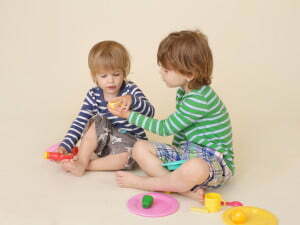As parents and teachers are well aware, limit setting is an important part of caregiving. Setting clear and consistent limits helps children feel safe, and encourages them to learn self-control and socially acceptable ways of getting their needs met. However, as we talked about in last week’s blog post, limit setting is most effective in moderation and when balanced with reinforcement and redirection. No one wants to be the parent constantly yelling, “No! Stop! Don’t!”. In fact, this kind of limit setting tends to be incredibly ineffective when used frequently. (And who remembers the child who is told, “Don’t hit your brother”, and thinks, “well you didn’t say I couldn’t spit on him or pinch him or trip him or put spiders in his cereal…” but I digress.)
Inevitably there will be times when a firm and consistent limit needs to be set, but there are also ways to reduce the amount of time spent setting limits by encouraging cooperation and following directions instead. Children want to do their best, while also getting their needs met. Because they are children, part of childhood is learning how to do this, and lucky you, you get to help them! When all children hear are the constant reminders of what they can’t and shouldn’t do, these admonitions begin to fall on deaf ears. By balancing the amount of time spent encouraging what we want to see more of, coupled with redirection to more pro-social behaviors, limit setting becomes more effective.
Here are some things parents and teachers can do to help children do their best without relying exclusively on limit setting.
Make it easy to follow expectations
The first step in setting children up for success is to make sure you are making it easy for them to do the right thing and follow directions. Pre-teaching, good directions, and positive attention are all great strategies to keep good behavior going, increase cooperation, and avoid the need for strenuous limit setting.
Pre-teaching is letting children know what is coming up and what the expectations are. As we talked about in a recent blog, pre-teaching not only sets children up to comply with the transition and prepare for changes to their schedule, but also when adults pre-teach upcoming events and expectations, they are helping children build their own self-regulation.
Step 1: Let children know a few minutes ahead of time that soon it will be time to change what they are doing, or that something new is about to happen. This ‘warning’ also allows you to coach them through how to be prepared to make a successful transition, “In 2 minutes it will be time to clean up, what can you do, or finish, in 2 minutes? Do you think you can make 1 more playdoh pizza?…”
Step 2: Let them know what the expectations are for the change and/or the new activity. “Ok, 2 minutes is up, it’s time to clean up. We need to put the lid on the playdoh, get our shoes on, and get in the car. Do you see the lid for the blue playdoh?”
Pre-teaching can also look like a simple reminder of what the expectations are for the upcoming activity: “Alright, we are almost to the grocery store. Do you remember the rules? You need to stay where I can see you, use a calm body and calm voice, and you can choose one treat at the end for following the rules.”
Good directions set children up for success by making directions clear and easy to follow.
If you were at a buffet and were told, “Don’t eat the jello” you would assume, that it must mean that you can eat everything else… and, now all I want to eat is the jello since you mentioned it.
If you were told, “You can eat the green jello with the pineapple, but not the green jello without pineapple, but you can eat the green jello without pineapple if it has whipped cream, but not if it has whipped cream with cherries on top, and only red jello with cherries but not whipped cream…”, you would probably be pretty confused about which jello was ok to eat.
If you were told, “Have all the jello you want today”, and then tomorrow someone yelled, “Don’t eat the jello!” you would probably be confused about whether you could eat jello the following day.
So instead of constantly telling children all the things not to do,
- tell them what to do
- give directions that are clear and concise (rather than rambling, confusing or too lengthy to remember)
- keep expectations consistent day to day (versus being one way today, and different tomorrow)
Positive Attention is one of the best ways to keep good behavior going. This lets children know what they are doing well and encourages them to keep doing it. Children need adults to take care of them, and what this often looks like is a constant need for attention, positive or negative. Children need adults to let them know, “I see you, I hear you, you’re important”. Often they will “act out” or try creative ways to get your attention if they feel ignored. Instead of waiting until you need to set a limit on off-task or disruptive behavior, use your valuable adult super power (positive attention) to keep them making good choices and following directions. This positive attention can look like: specific verbal praise, stickers and stamps, physical gestures like thumbs up, a smile and a nod, special high fives, or a pat on the back.
Stay tuned for next week when we will talk more about how to balance limit setting and reinforcement!
[divider type=”standard” text=”Go to top” full_width=”no” width=”1/1″ el_position=”first last”]
Image: © Atholpady | Dreamstime.com




